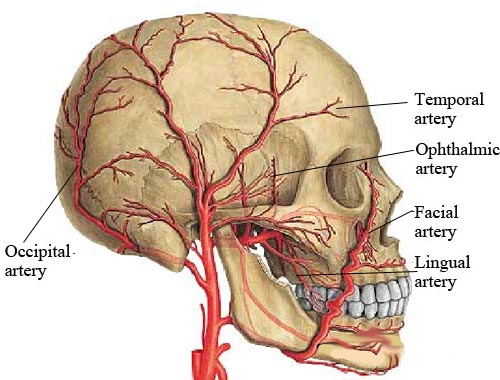Giant Cell Arteritis (Temporal arteritis, Cranial arteritis)
Giant cell arteritis is an inflammation of the lining of arteries, the blood vessels that carry oxygen-rich blood from the heart to the rest of the body. Giant cell arteritis (GCA) is a common form of vasculitis in people aged 50 years or older. Mostly it affects the arteries in head, especially those in temples. For this reason, giant cell arteritis is sometimes called temporal arteritis or cranial arteritis. The extracranial branches of the carotid artery are usually affected. Giant cell arteritis frequently causes headaches, jaw pain, and blurred or double vision. Blindness and, less often, stroke are the most serious complications of giant cell arteritis. Prompt treatment of giant cell arteritis is critical in order to prevent permanent tissue damage and loss of vision. Corticosteroid medications usually relieve symptoms of giant cell arteritis and may prevent loss of vision. Patient will likely begin to feel better within days of starting the treatment. Irreversible blindness is the most common serious consequence. Aortic aneurysms and large vessel stenoses may occur as a long-term complication. Temporal artery biopsy is the definitive test to establish diagnosis. Patients with jaw claudication, diplopia, and an abnormal temporal artery on examination are more likely to have a temporal artery biopsy that is positive for GCA. GCA is unlikely if levels of inflammatory markers are normal. Prednisone is highly effective therapy. Treatment should not be delayed while awaiting biopsy.
